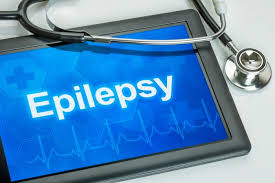- Home
- Editorial
- News
- Practice Guidelines
- Anesthesiology Guidelines
- Cancer Guidelines
- Cardiac Sciences Guidelines
- Critical Care Guidelines
- Dentistry Guidelines
- Dermatology Guidelines
- Diabetes and Endo Guidelines
- Diagnostics Guidelines
- ENT Guidelines
- Featured Practice Guidelines
- Gastroenterology Guidelines
- Geriatrics Guidelines
- Medicine Guidelines
- Nephrology Guidelines
- Neurosciences Guidelines
- Obs and Gynae Guidelines
- Ophthalmology Guidelines
- Orthopaedics Guidelines
- Paediatrics Guidelines
- Psychiatry Guidelines
- Pulmonology Guidelines
- Radiology Guidelines
- Surgery Guidelines
- Urology Guidelines
New epilepsy drug reduces focal onset seizure frequency by 55%: Lancet

Epilepsy patients are always under constant fear of getting a seizure at an odd time while driving or working. The available seizure drugs have limited success with side effects. More than a third of patients with epilepsy are treatment-resistant, and thus new, more effective therapies to achieve seizure freedom are needed.
Researchers are therefore in a lookout for new epilepsy drugs which should be more effective and keep patients seizure-free and at the same time should have a wider safety profile. In their attempt to search for new epilepsy drugs, researchers have found that an investigational drug cenobamate reduced seizures by 55% on the two highest doses of this medication that were tested over the entire treatment period.
The study was led by a Johns Hopkins lead investigator conducted on 437 patients across 107 institutions in 16 countries. The findings of this trial have been published in The Lancet Neurology.
Currently, more than 20 anti-seizure drugs are on the market, but approximately 40% of people with epilepsy -- a chronic seizure condition -- don't become seizure-free on these traditional medications. And while 15 new epilepsy drugs have become available since 1993, none of these has a seizure-free rate greater than 5% among people with treatment-resistant epilepsy.
Cenobamate has just been approved by the Food and Drug Administration (FDA) is being studied for treating a specific type of seizure in adults who don't yet have them controlled by other treatments. In this specific seizure type, known as partial-onset seizures, the electrical disturbance is limited to specific regions of the brain. Although cenobamate hasn't been priced yet, most of the newer anti-seizure drugs that come on the market can cost between $10,000 and $20,000 per year.
"A quarter of the patients I treat with this drug [cenobamate] who were disabled by frequent partial-onset (focal) seizures now have been seizure-free for several years," says lead investigator Gregory Krauss, M.D., professor of neurology at the Johns Hopkins University School of Medicine. "It is wonderful to see the improvement in many of my patients' lives. They have improved confidence and can live more normal lives. Many can now work, and both patients and caretakers can be more independent."
For the study, the researchers gave 437 participants 100, 200 or 400 milligrams of cenobamate or a placebo pill. The cenobamate dose was ramped up slowly for up to six weeks until the testing dose was reached. This was followed by a 12-week maintenance phase. The participants were all adults who were already taking up to three anti-seizure medications, and all had a history of eight or more seizures during the previous eight weeks.
For the participants in the maintenance period on the placebo, 25% saw a 50% or more reduction in the number of seizures. On the 200 milligram dose during the maintenance period, 56% of participants had a 50% or more reduction in the number of seizures. On the highest dose (400 milligrams), 64% of participants had a 50% or more reduction in the number of seizures, and up to 21% had no seizures at all during the maintenance period.
While the investigational drug seems promising, Krauss cautions that typically something like 30,000 or more patients need to be treated before all the safety information will be known. The study simulates regular treatment, but to meet FDA ethical standards, participants must remain on their previously prescribed anti-seizure drugs without dose changes. This requirement often results in frequent, though usually temporary mild or moderate, adverse events with symptoms such as dizziness, headache and double vision. One severe allergic reaction (known as DRESS) was reported. After this study, medication doses were adjusted to customize treatment for each patient's needs.
For further reference log on to:
//doi.org/10.1016/S1474-4422(19)30399-0

Disclaimer: This site is primarily intended for healthcare professionals. Any content/information on this website does not replace the advice of medical and/or health professionals and should not be construed as medical/diagnostic advice/endorsement or prescription. Use of this site is subject to our terms of use, privacy policy, advertisement policy. © 2020 Minerva Medical Treatment Pvt Ltd